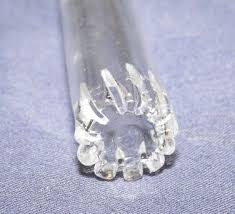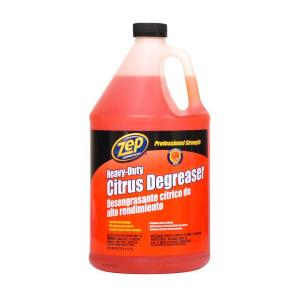Frederick McGuire
Aggressively Loungey
OK guys, I think we kinda need this thread, I'm seeing people ask about some of the basics of glass terminology fairly regularly, and I know I would've found this useful before I got into glass, as it was kinda daunting with the amount of stuff I didn't know...
With that said, here's my beginnings of your one-stop-shop for glass terminology
Feel free to post anything you think I missed, I doubt this list will ever be complete
Glass on glass/GonG - a style of bong/bubbler where all connections are ground glass.
Ground glass - a type of finish on glass that will give an airtight seal.
Downstem - a glass tube that is inserted into a bong/bubbler to allow vapor to be brought below the water level of the piece.
Stemless - a style of bong/bubbler that does not use a downstem.
Grommetted - A style of bong/bubbler where the downstem is inserted through a rubber grommet to create an airtight seal.
Generally the downstem will be made of metal, and a grommetted piece will tend to taste worse than a GonG piece.
(14/14.4)mm & (18/18.8/19)mm - this refers to the size of the ground glass joint. The numbers in brackets all refer to the same size.
Adapters can be found to reduce or enlarge either of these joint sizes for under $20.
10mm is a less common, smaller joint size, and 23mm is a less common larger joint size.
Low profile/Bushing (joint) - A style of joint where the female joint is the next size down from the male joint, and sits inside the male joint.
This is most commonly seen in 18mm to 14mm reducing adapters, and some downstems that come with 18mm tubes.
China glass - pieces produced out of lower quality glass, generally mass-produced production pieces (not necessarily from china)
Perc - short for percolator
Diffy - short for diffuser
Percolator/diffuser - somewhat interchangeable.
Diffuser seems to be used more for a downstem that has slits or some other type of diffusion.
Perc tends to be used more for diffusers that are fixed in place within a bong/bubbler, or for a diffuser that is in its own separate chamber.
Dewaar - a type of ground glass joint where the end of the joint sits flush with the surface of the glass.
There is no major functional difference between a dewaar joint and a regular joint.
Straight tube - A style of water filtration where the piece is essentially just a straight tube, often with a downstem.
Beaker - mostly the same as a straight tube, but has a flared out base, quite similar to a scientific flask (and ironically enough, nothing like a scientific beaker)
Bubbler - tend to be on the smaller side, more so designed for use while being held (as opposed to some larger tubes that are best used sitting on a flat surface).
Sandblast(ed/ing) - a process where sand is shot at the glass at a very high speed.
This leaves a cloudy texture on the surface of the glass, and can be used to add artistic patterns/designs to a piece, or as a alternative way to add logos to a piece.
Bore - the diameter of glass tubing used in a particular section of a glass piece.
e.g. 50x5 would be glass tube that has a 50mm diameter, with 5mm thick glass.
45/90 degree - the angle of the male ground glass joint on an ash catcher. A 90 degree joint is vertical, while a 45 degree joint is at an angle.
Ash Catcher (a/c) - An additional chamber that can be added to a water piece. It can be used purely to keep other water pieces clean (this is more so a factor for combustion), or to add another level of diffusion to an existing piece.
Showerhead - A tube with slits cut vertically at the end

X-Arm/Finger/Tree - A series of vertical tubes, often with 2-3 horizontal slits cut in them.

Inline - A horizontal tube with slits cut in it.

Stemline - A variation of an inline perc.

Glycerin (coil) - a style of cooling, where a tube of glass is set within another, larger tube, and the gap between them is filled with glycerin.
This can then be put in the freezer, so the glycerin will cool the vapor as you inhale it through the inner tube.
Disc (diffuser/perc) - a style of perc most commonly seen on stemless pieces, the style will change from piece to piece, but it is basically a glass disc that is the same diameter as the tube, with some holes in it to let the air through.
Natural perc: the name given to a style of tube that has no perc or diffy.
IMO, it's a misleading name, as there's nothing there .
.
Scientific: a style of glassblowing where the tubes are clear, without many fancy colors or sculpting etc.
Heady: a style of glassblowing where the tube can have different colors/patterns in it, pieces may be sculpted etc.
Generally more expensive than scientific stuff.
Keck clip: a (most commonly) plastic clip, designed to hold a male and female GonG connection together.
Different sizes are available for the different joint sizes.
Note: keck clips don't seem to be available for low profile joints.
With that said, here's my beginnings of your one-stop-shop for glass terminology

Feel free to post anything you think I missed, I doubt this list will ever be complete

Glass on glass/GonG - a style of bong/bubbler where all connections are ground glass.
Ground glass - a type of finish on glass that will give an airtight seal.
Downstem - a glass tube that is inserted into a bong/bubbler to allow vapor to be brought below the water level of the piece.
Stemless - a style of bong/bubbler that does not use a downstem.
Grommetted - A style of bong/bubbler where the downstem is inserted through a rubber grommet to create an airtight seal.
Generally the downstem will be made of metal, and a grommetted piece will tend to taste worse than a GonG piece.
(14/14.4)mm & (18/18.8/19)mm - this refers to the size of the ground glass joint. The numbers in brackets all refer to the same size.
Adapters can be found to reduce or enlarge either of these joint sizes for under $20.
10mm is a less common, smaller joint size, and 23mm is a less common larger joint size.
Low profile/Bushing (joint) - A style of joint where the female joint is the next size down from the male joint, and sits inside the male joint.
This is most commonly seen in 18mm to 14mm reducing adapters, and some downstems that come with 18mm tubes.
China glass - pieces produced out of lower quality glass, generally mass-produced production pieces (not necessarily from china)
Perc - short for percolator
Diffy - short for diffuser
Percolator/diffuser - somewhat interchangeable.
Diffuser seems to be used more for a downstem that has slits or some other type of diffusion.
Perc tends to be used more for diffusers that are fixed in place within a bong/bubbler, or for a diffuser that is in its own separate chamber.
Dewaar - a type of ground glass joint where the end of the joint sits flush with the surface of the glass.
There is no major functional difference between a dewaar joint and a regular joint.
Straight tube - A style of water filtration where the piece is essentially just a straight tube, often with a downstem.
Beaker - mostly the same as a straight tube, but has a flared out base, quite similar to a scientific flask (and ironically enough, nothing like a scientific beaker)
Bubbler - tend to be on the smaller side, more so designed for use while being held (as opposed to some larger tubes that are best used sitting on a flat surface).
Sandblast(ed/ing) - a process where sand is shot at the glass at a very high speed.
This leaves a cloudy texture on the surface of the glass, and can be used to add artistic patterns/designs to a piece, or as a alternative way to add logos to a piece.
Bore - the diameter of glass tubing used in a particular section of a glass piece.
e.g. 50x5 would be glass tube that has a 50mm diameter, with 5mm thick glass.
45/90 degree - the angle of the male ground glass joint on an ash catcher. A 90 degree joint is vertical, while a 45 degree joint is at an angle.
Ash Catcher (a/c) - An additional chamber that can be added to a water piece. It can be used purely to keep other water pieces clean (this is more so a factor for combustion), or to add another level of diffusion to an existing piece.
Showerhead - A tube with slits cut vertically at the end
X-Arm/Finger/Tree - A series of vertical tubes, often with 2-3 horizontal slits cut in them.
Inline - A horizontal tube with slits cut in it.

Stemline - A variation of an inline perc.
Glycerin (coil) - a style of cooling, where a tube of glass is set within another, larger tube, and the gap between them is filled with glycerin.
This can then be put in the freezer, so the glycerin will cool the vapor as you inhale it through the inner tube.
Disc (diffuser/perc) - a style of perc most commonly seen on stemless pieces, the style will change from piece to piece, but it is basically a glass disc that is the same diameter as the tube, with some holes in it to let the air through.
Natural perc: the name given to a style of tube that has no perc or diffy.
IMO, it's a misleading name, as there's nothing there
 .
.Scientific: a style of glassblowing where the tubes are clear, without many fancy colors or sculpting etc.
Heady: a style of glassblowing where the tube can have different colors/patterns in it, pieces may be sculpted etc.
Generally more expensive than scientific stuff.
Keck clip: a (most commonly) plastic clip, designed to hold a male and female GonG connection together.
Different sizes are available for the different joint sizes.
Note: keck clips don't seem to be available for low profile joints.



 ) I just think it's dodgy to call something a perc when you haven't constructed any kind of perc...
) I just think it's dodgy to call something a perc when you haven't constructed any kind of perc...



 Can y'all share any good tips?
Can y'all share any good tips?